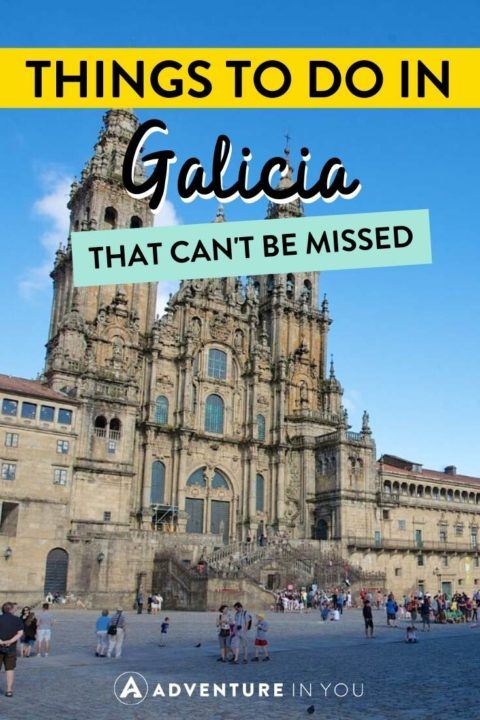Looking for things to do in Galicia Spain? Keep on reading this article as we have a ton of awesome recommendations for you.
Spain is one of the most popular travel destinations in the world. The beaches, the festival, the cathedrals, the food, and the lively culture attract tourists from all over the world to travel to Spain.
Tourists tend to favor the Mediterranean coast and the islands, but Galicia has plenty of things to keep them entertained.
In this post, we are going to explore the ten best things to do in Galicia. Spoiler alert: it has a rich heritage, unique beaches, unspoiled islands, amazing waterfalls, and historic towns. It’s also home to the world’s most famous hike.
If you’re looking for an article with insider tips on what to do, where to eat, and more, look no further as we got you covered.
View Contents
- Galicia Things to Do Highlights
- Best Things to Do in Galicia
- 1. Camping in the Cíes Islands
- 2. Go to Fragas Do Eume
- 3. Explore Santiago de Compostela
- 4. Hike the Camino de Santiago
- 5. Go to the End of the World (Cape Finisterre)
- 6. Climb to Ezaro Lookout
- 7. Walk on the Walls of Lugo
- 8. Eat some Pulpo a Fiera (Pulpo Gallega)
- 9. Visit Cathedrals Beach
- 10. Visit the Charming Village of Combarro
- 11. Explore a 2000-Year-Old Lighthouse
- 12. Go to El Banco Más Bonito del Mundo (the Most Beautiful Bench in the World)
- 13. Visit San Andrés de Teixido
- Where to Stay in Galicia
Galicia Things to Do Highlights
- Excursion to Finisterre + Muxia + Costa da Morte– This top rated tour takes you to the stunning seaside of Galicia featuring 7 popular stops.
- Beach Excursions Discover the best beaches in the area through this guided tour featuring a trip to Playa de las Catedrales, Lugo & Ribadeo.
- Travel to the end of Spain: This local day tour will take you to the famous spots of Muxia and Finisterre where you can bask in their incredible coastal views.
- Santiago de Compostela Private Tour: This guided tour of Santiago de Compostela cathedral will fill you in on all the ins and outs of this stunning church! Must-do while in Santiago!
- Old Town Santiago de Compostela Walking Tours: No need to waste time figuring out maps and guidebooks while exploring Santiago de Compostela’s UNESCO-listed old town, as this walking tour will guide you seamlessly through the narrow city streets.
- Excursion to Rias Baixas (Boat Tour with Mussels and Wine): Explore the wide, open seas while sipping some of the most famous wines in Spain!
✨The 1 Thing We Never Leave Home Without…✨

Coming from someone who has been traveling the world for the last 8 years AND has been in the hospital 2x, travel insurance is something everyone NEEDS to get. Get a quote below!
Best Things to Do in Galicia
1. Camping in the Cíes Islands
The Cies archipelago consists of three islands, Monteagudo, Faro, and San Martiño and they are probably Galicia’s greatest treasure.
The Islands are located in the mouth of the Ria de Vigo, about 10km from the port of Vigo. You can reach the archipelago via a boat trip from Vigo, and it should take between 40 to 45 minutes to reach the islands.
The biggest attraction of the Cíes are their beautiful beaches and beautiful water. The islands are the home of nine beaches, the star certainly being the beach of Rodas. Playa de Rodas is a bay-shaped beach of roughly 700 meters, connecting the islands of Monteagudo and Faro.
The Cies islands are perfect for a day trip from Vigo but what we really suggest is spending a night (or more) at the campsite in the Cíes. However, you should be aware that you have to reserve your spot in advance at the Vigo port.
Also, note that there aren’t hotels on the islands, so camping is really the only option to spend the night. On the other hand, there is a restaurant, a small supermarket, and a visitor center, so you aren’t really on your own.
The downside of the Cies islands? Well, the water is as cold as it’s beautiful, but then again if it wasn’t so cold, it wouldn’t be the pristine paradise that it is. Another beautiful beach along Galicia that is worth visiting is Santa Comba beach.
Travel Must: We love renting cars whenever we travel- it just gives you so much freedom to explore at your own pace. Click here to compare car rental prices You’ll be surprised at how affordable it is!
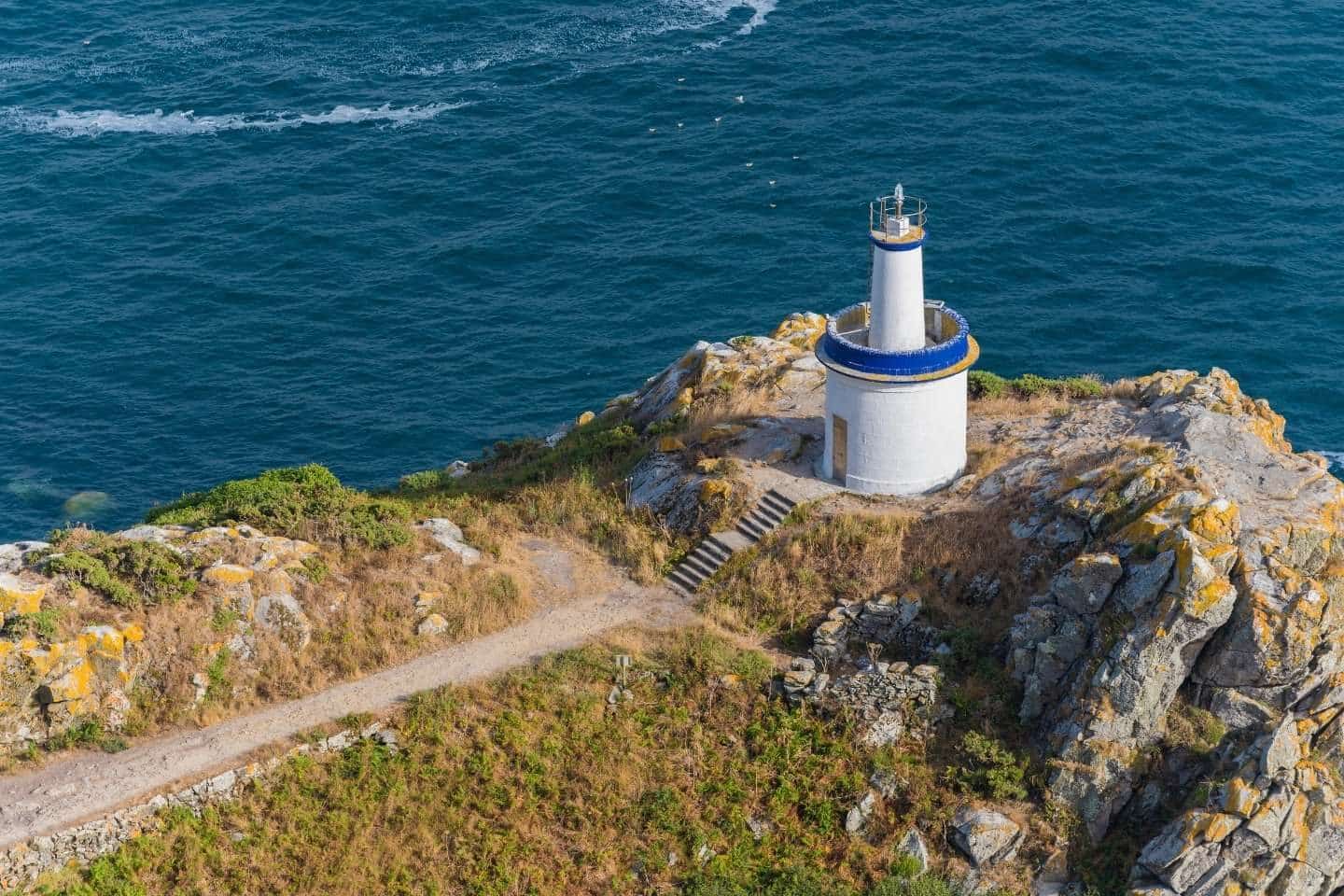
Psst...Want in on a Secret? 🤫

We've scoured the internet for the best ALL-AROUND travel shoe and Tropicfeel wins by far. We've taken ours through rivers, jungles, and cities and they're still alive and kickin'. Check them out below.
2. Go to Fragas Do Eume
Fragas do Eume is one of the least famous things on this list, but it’s really worth the visit.
Fragas do Eume is a dense Atlantic forest on the banks of river Eume. This natural woodland is one of the best examples of a temperate rainforest, with a really diverse array of trees, of which the oak is the real star.
Hiding in this forest is the 10-centuries-old monastery of Saint John of Caaveiro, which has a fascinating history. It’s very fun to visit, and one of the best things about this park is hiking through the very dense forest and enjoying all the shades of green you can imagine.
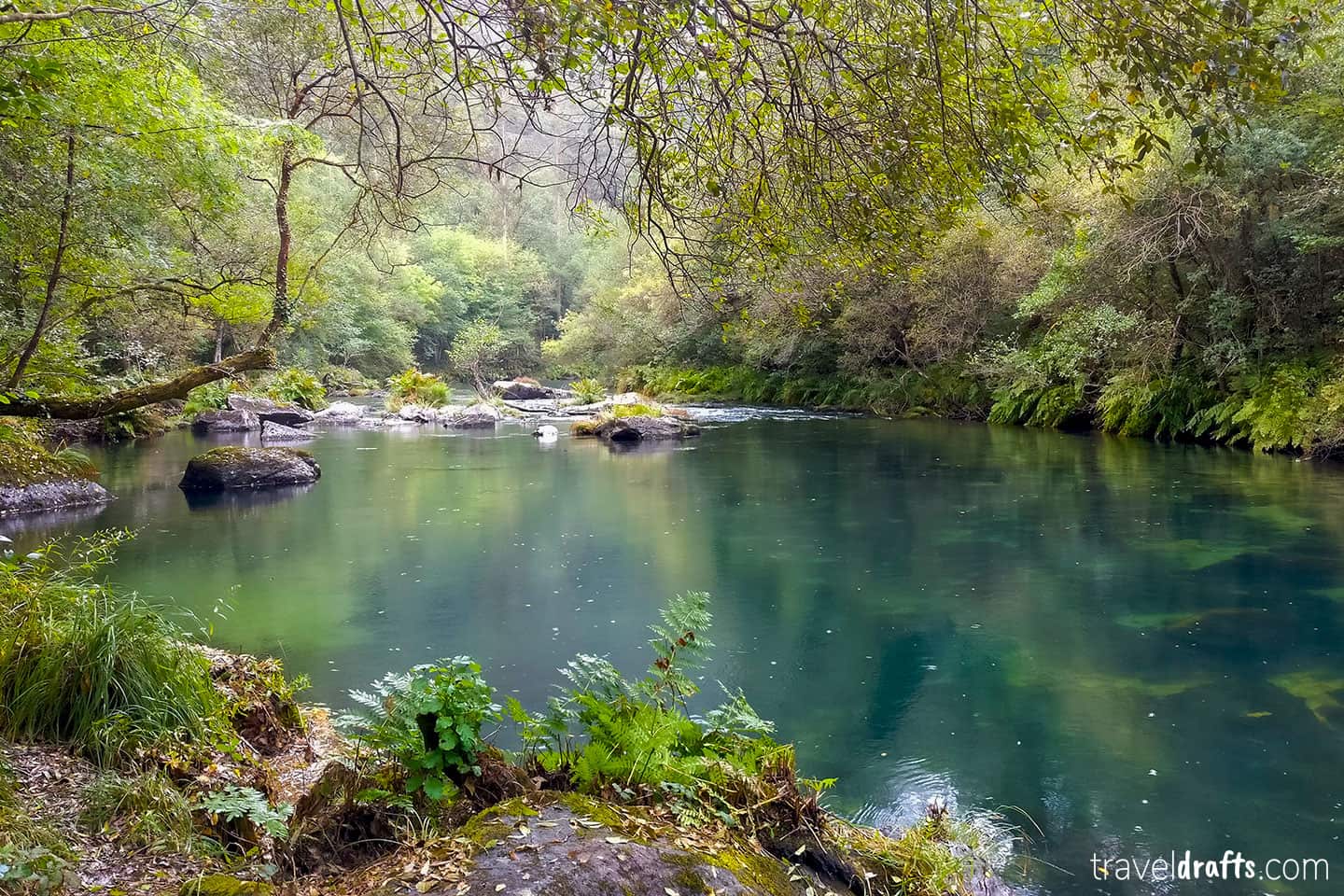
3. Explore Santiago de Compostela
As we said above, Santiago de Compostela holds the Shrine of Saint James in the Cathedral. The Sanctuary holds the remains of the apostle James which were brought to Galicia in the 9th century.
While it’s most known for this, Santiago has more to it than the Shrine and Sanctuary.
Santiago de Compostella has a wonderful medieval centre with cobbled streets, old buildings, and some interesting monuments that have been very well preserved.
The Old Town of Santiago has been a UNESCO heritage site since 1985. With a mix of Romanesque, Gothic, and Baroque buildings, UNESCO considers Santiago “one of the world’s most beautiful urban areas.”
Visiting the Santiago de Compostela cathedral is definitely something you shouldn’t miss while you’re here and is considered one of the best things to do in Galicia.
Tip: To learn more about the history of this city and the cathedral, it’s a good idea to join a guided tour of the cathedral and museum. This 2-hour tour will level up your appreciation of its history, architecture, and cultural significance!
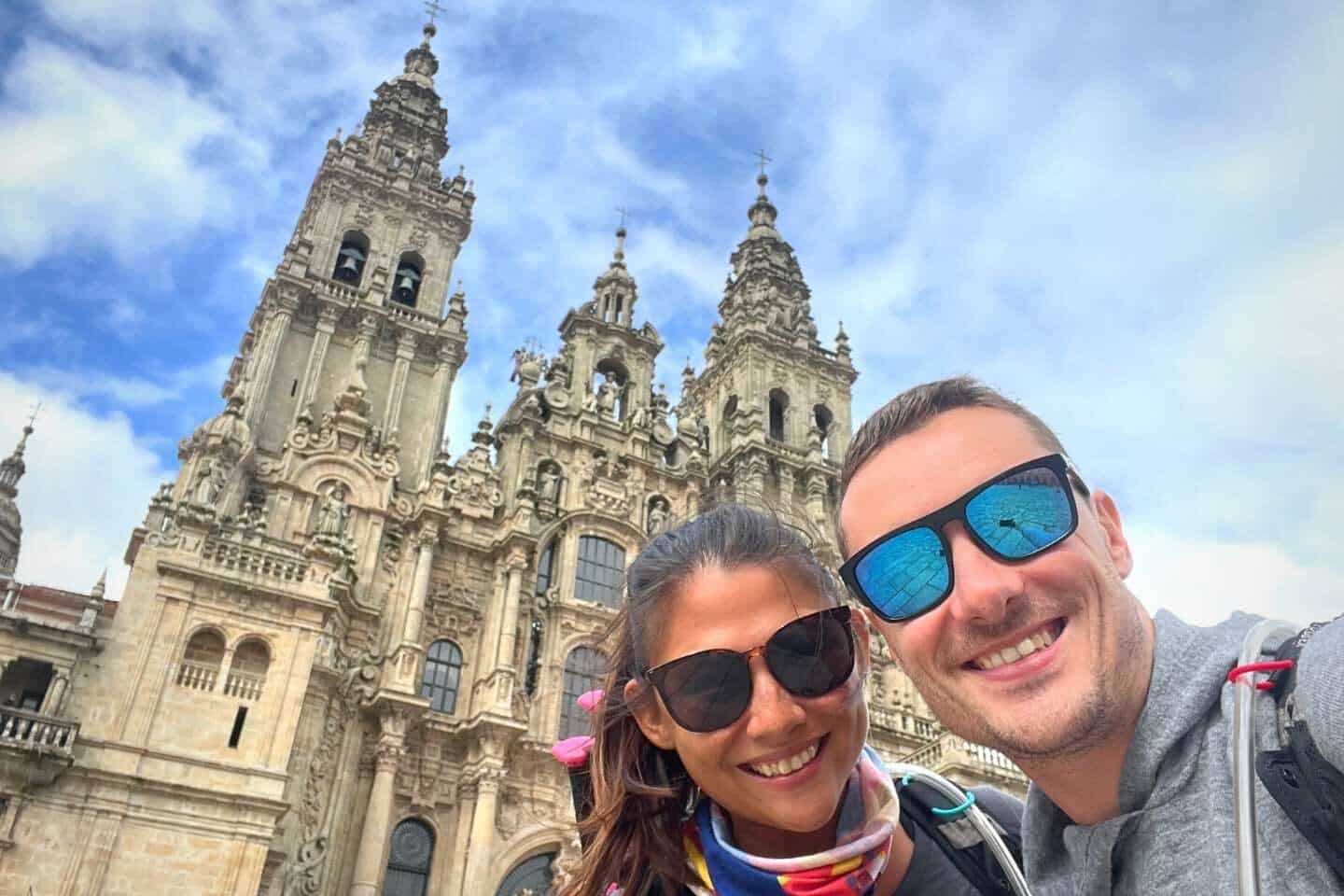
4. Hike the Camino de Santiago
The Camino de Santiago is a network of pilgrims’ ways leading to the shrine of the apostle Saint James in Santiago de Compostela. It has become extremely popular in the last decades, both for religious and non-religious reasons.
One of the coolest things about the Camino de Santiago is that you have several ways to reach your destination. You have the Primitive way (starts in Oviedo), the French way (the most popular), the Portuguese way, and the Northern way, among others.

In fact, you can start wherever you want, and follow your way to Santiago—and that’s the true beauty of it. The founders of this blog recently walked 300km from Porto, Portugal to Santiago de Compostela (Camino de Portuguese and had THE best time ever!)
The way of Saint James is a great way of traveling slow and getting to know Galicia and the locals. It started as a pilgrimage but it’s so popular today that it’s more of a way of travel in Spain and hiking than anything else.
Tip: Want to get a feel of what this hike is like? You can walk the last 7km of Way of this popular hike in this guided day hike. As you enter the city and get your first glance of the cathedral, your local guide will share with you stories about the Camino and Santiago.
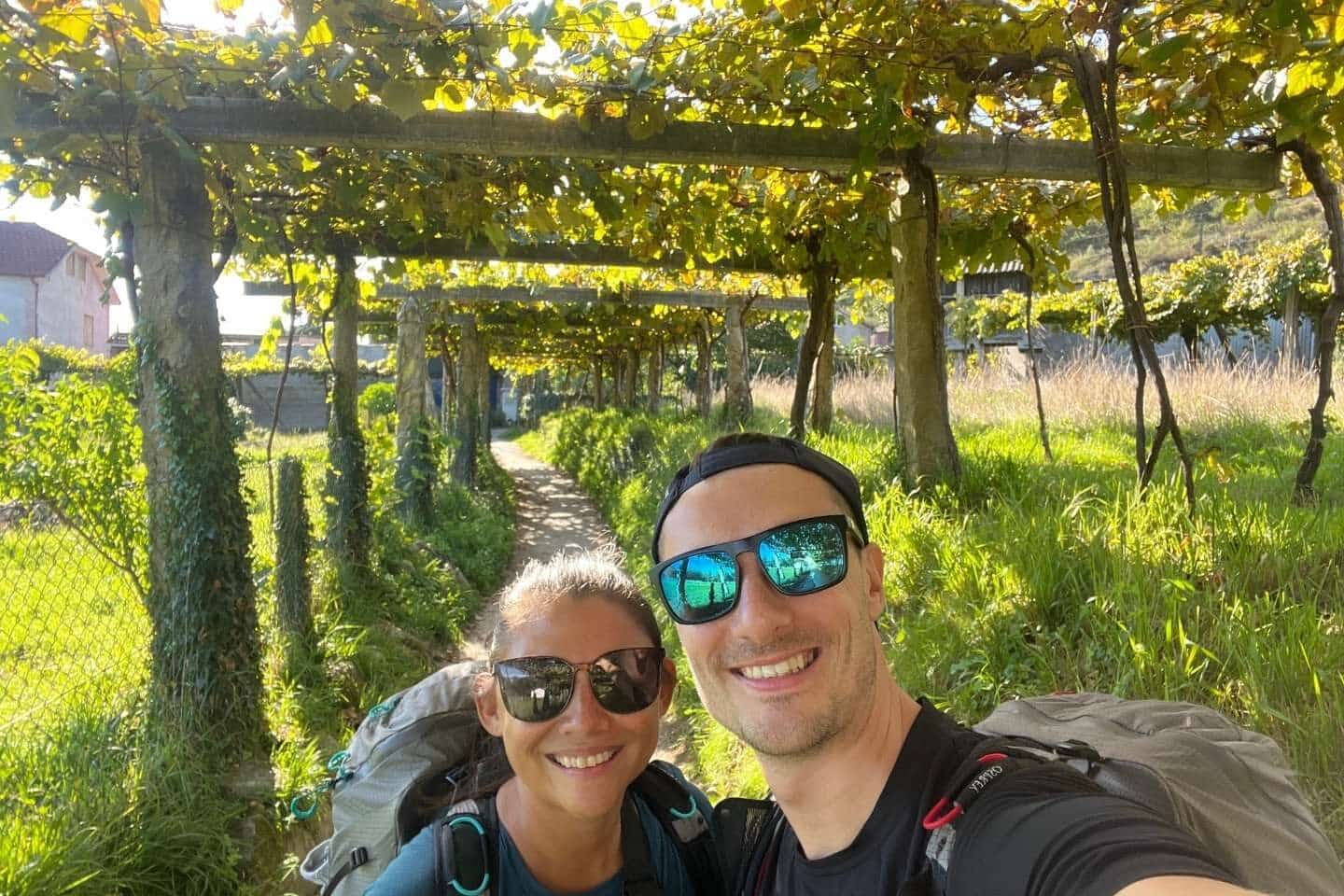
5. Go to the End of the World (Cape Finisterre)
The Romans considered Finisterre the westernmost point of Continental Europe — and thus the end of the world.
Today, we know that the westernmost point is in fact Cabo da Roca in Portugal, but Cape Finisterre still attracts people to see its phenomenal sunset over the seemingly endless Atlantic Ocean.
At the edge of Finisterre, you can also find a huge lighthouse that protects ships from the very dangerous water and rocks in the area. This coast is usually dubbed the Death Coast (Costa de la Muerte) due to the huge amount of shipwrecks that happened over the years.
The lighthouse is also one of the best lookouts in the region — one where you can see the ocean, the coast, and everything else.
Cape Finisterre is about 90km west of Santiago de Compostela and some people consider it the true final destination of the Way of St. James. Tradition says that when pilgrims arrive they should burn their clothes and then bathe on Langosteira beach nearby.
We don’t really recommend doing that and have found that a lot more pilgrims are now passing along their items (trekking poles and boots) to fellow pilgrims which is a much better tradition. Another popular place to explore is Costa da Morte.
Costa da Morte received its name because of the many shipwrecks that have fallen to their demise along its rocky shores.
Tip: An easy way to visit Cape Finisterre is on a day tour from Santiago. This full-day excursion will take you to the cape as well as the villages of Muros and Muxia. You’ll also stop at the waterfall in Ézaro (which we’ll talk about next!).
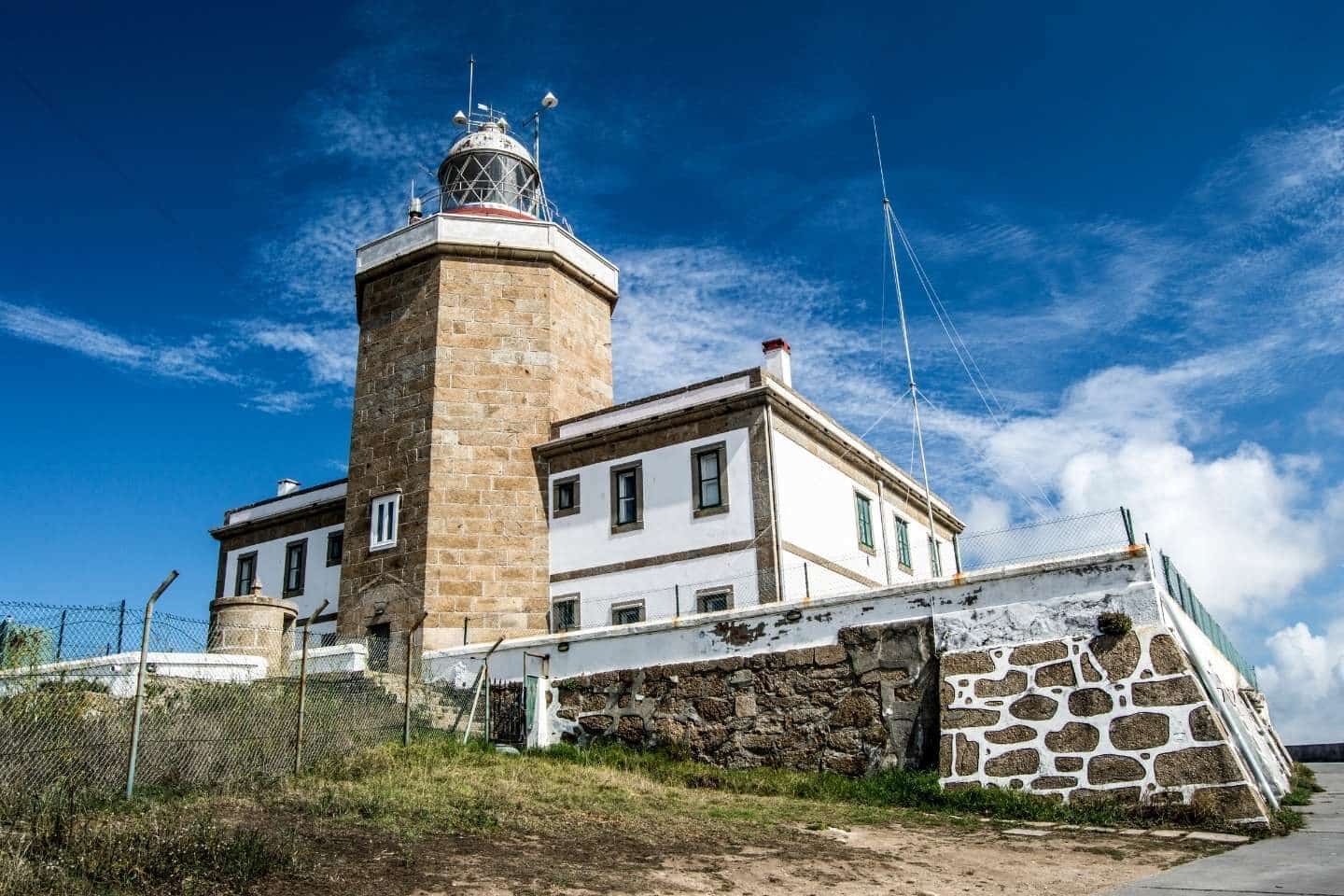
6. Climb to Ezaro Lookout
The Ezaro Lookout and Ezaro Waterfall are located very close to Finisterre and is one of the top places to visit in Galicia.
Ezaro Waterfall (sometimes called Xallas Waterfall as it’s on Xallas River) is one of the biggest in Europe, more than 150 meters high. It’s a really impressive site and one of only a handful in Europe to fall directly into the sea as a waterfall.
From the waterfall, there’s a really steep road that climbs to Ezaro Lookout. The road itself is incredible, with parts reaching an inclination of almost 30%. It’s a really fun drive and, if you are fit enough, a cool bike climb to do!
Once up in the lookout, you can see Cape Finisterre, the Death Coast and Mount Pindo, though you can’t see the waterfall as it’s right below where you are. Either way, the view is astonishing.
7. Walk on the Walls of Lugo
Lugo is located in the interior of Galicia, about 100km from Santiago de Compostela.
The main attraction of Lugo is its Roman era walls. These walls were built in the 3rd century to protect the Roman city. Incredibly, the entire circuit of the walls have survived till today and it’s considered the finest example of Roman fortifications.
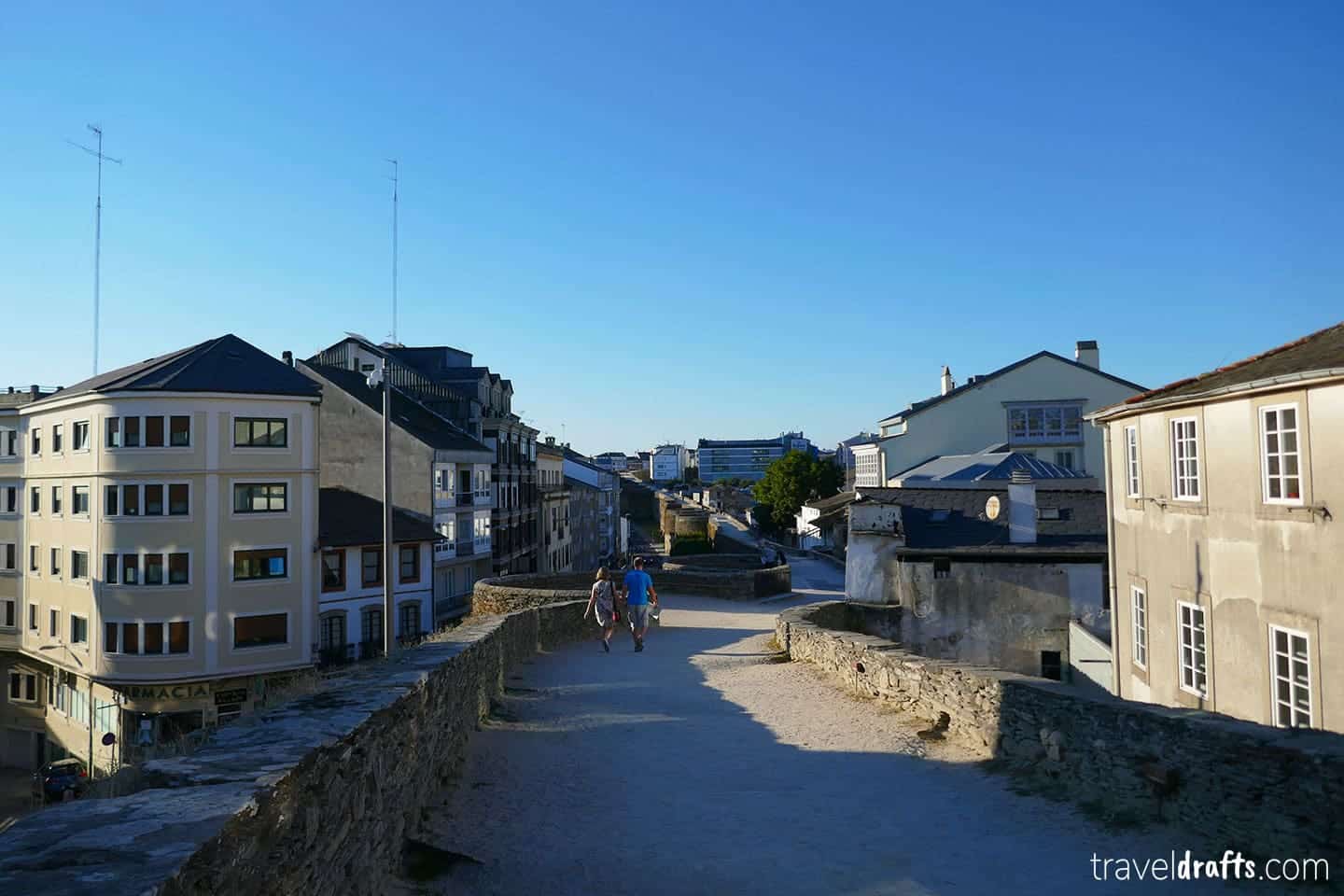
The whole Old Town of Lugo is enclosed by the walls and you can only access it through one of the eleven gates. The historic center preserves a medieval charm, with the small alleys and the antique houses.
The most interesting thing about the walls is that you can walk on them and see the town from there. The whole circuit is about 2km, which you can fully hike.
Lugo is also one of the most important spots in the Way of St James.
Looking for more tips on traveling Spain? Check out of full Spain Travel Guide
8. Eat some Pulpo a Fiera (Pulpo Gallega)
This traditional Galician dish can be found in almost every place in Galicia. While eating Octopus may sound a little bit too adventurous, trust us, it is one of the best things to do in Galicia.
The pulpo is soft, tender, and not chewy at all! This along with some Galician wine tasting is the perfect combination! We enjoyed eating Pulpo in different spots in Galicia and loved it.

9. Visit Cathedrals Beach
Cathedrals Beach is located 10 km west of Ribadeo, in the northern shore of Galicia, between huge cliffs and a very rugged shoreline.
This beach stands out from all the other Galician beaches because of its setting and surroundings, which features a collection of unique rock arches and caves.
The secret: you can only see them at low tide.
If you go to Cathedrals Beach when it isn’t low tide, you’ll be disappointed as it’s not really that impressive. And if the tide is high enough, you can’t even enter the beach and sunbathe there.
This is a destination that you’ll have to time your visit to fully enjoy it.
10. Visit the Charming Village of Combarro
Combarro is a charming town in Galicia that is worth visiting when you’re in the area. It is a picturesque seaside village that has been made popular by its made amazing seafood restaurants and cruceiros (stone crosses).
Aside from the seafood restaurants, they also have these stone granaries called Horreos which are used to store food.
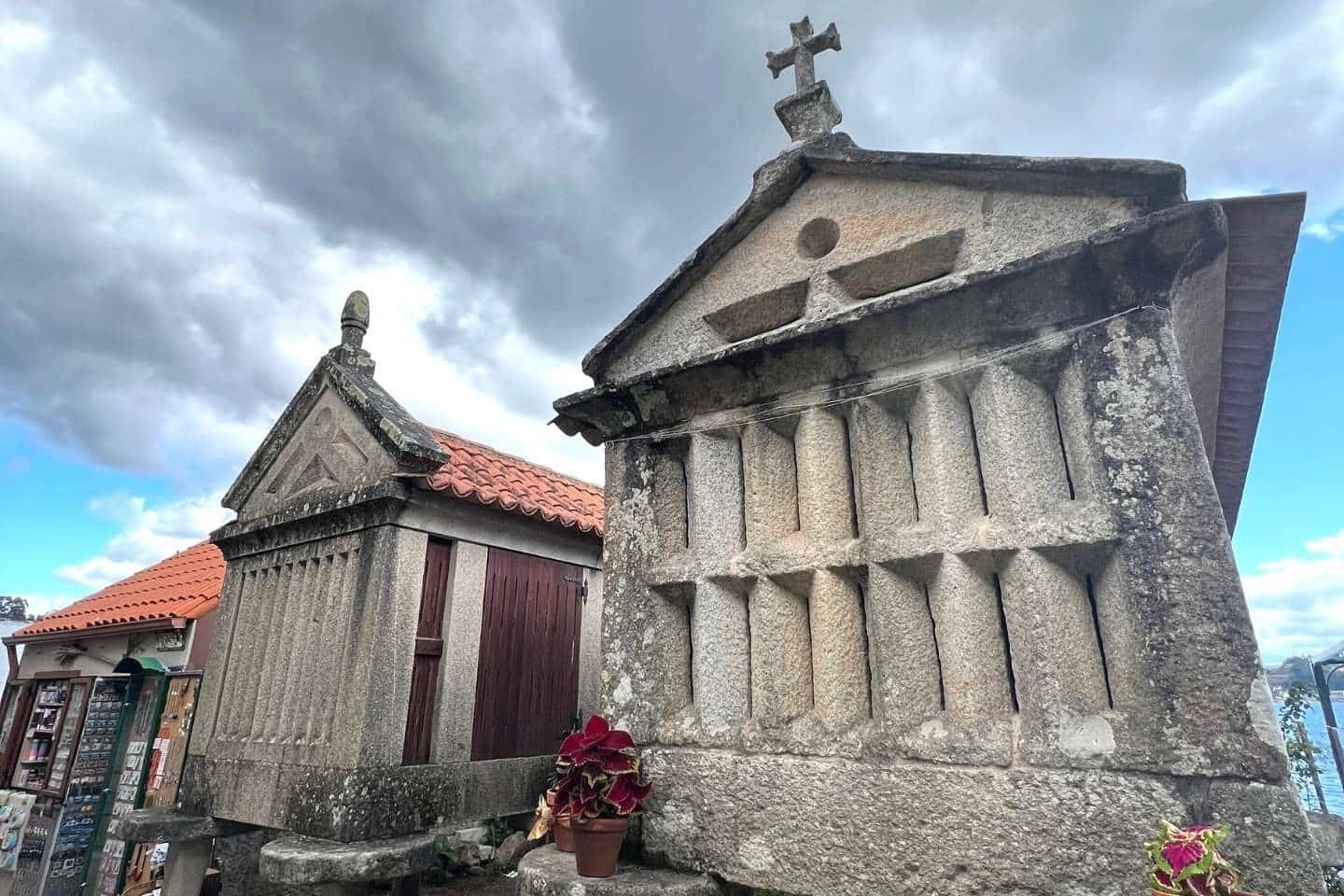
11. Explore a 2000-Year-Old Lighthouse
The tower of Hercules in La Coruña is the oldest working lighthouse in the world and the only fully-preserved Roman lighthouse still in use for maritime signaling.
This structure was built in the 2nd century and renovated in 1791. This UNESECO World Heritage Site comes in at 55 meters high and overlooks the North Atlantic coast of Spain.
It’s possible to visit and climb to the top of this impressive construction, and it’s one of the coolest things to do while traveling in Spain. As expected, this is a very popular thing to do in Galicia and for obvious reasons there are very limited tickets. Thus we advise you to buy tickets in advance.
Besides the tower, La Coruña has plenty of other things to do. The Old Town is a good place to explore, as well are the seafront promenade and the urban beaches. Like many other Spanish towns, this is a very lively place to have fun at night.
12. Go to El Banco Más Bonito del Mundo (the Most Beautiful Bench in the World)
Along the northern Galician coast, there are plenty of signs indicating “the most beautiful bench in the world.” This is a pretty smug title, but it works… who doesn’t want to see the most beautiful bench in the world?
This bench is located in Ortigueira near Loiba, about 110km from La Coruña. We are not sure if it’s the most beautiful, but it doesn’t disappoint. It offers an incredible view over the Atlantic Ocean and the cliffs.
It’s one of the most beautiful places in Galicia to take photos, so this is a must-visit spot for photography addicts!

13. Visit San Andrés de Teixido
Located in the municipality of Cedeira, San Andrés de Teixido is a small sanctuary and pilgrimage site by the highest cliffs in mainland Europe.
Apart from Santiago de Compostela, it is one of the most famous pilgrimage sites in Galicia and is worth the incredible uphill trek.
Galicia has so much to offer its visitors! Besides these amazing things to do, it also has a unique culture with a distinct language, heritage, and food. It may not be Spain’s most famous destination but it’s one of the best to travel to.
Where to Stay in Galicia
As mentioned, there are a ton of different options on where to stay in Galicia- it just depends on which area you are heading to. Here are a few of our top picks.
Sercotel Hotel Baia is located between Vigo’s old town and Cies Islands pier is a great option for those looking for a clean hotel with epic views.
Casa Nueva Playa Areabrava Hio is a beautiful place, perfect for groups or families. It comes with a bbq pit, a lush garden, and seaside views.
If you’re looking for luxury, the Hotel Pazo Los Escudos Spa & Beach in Vigo has it all. Indoor pool, beachfront, hammam and spa, outdoor pool, and more!
Editor’s Note: This article was originally written by Jorge and Claudia but has since been updated by the Adventure in You team.
Looking for more on Spain? Check out these articles
Inspired? Pin it!
